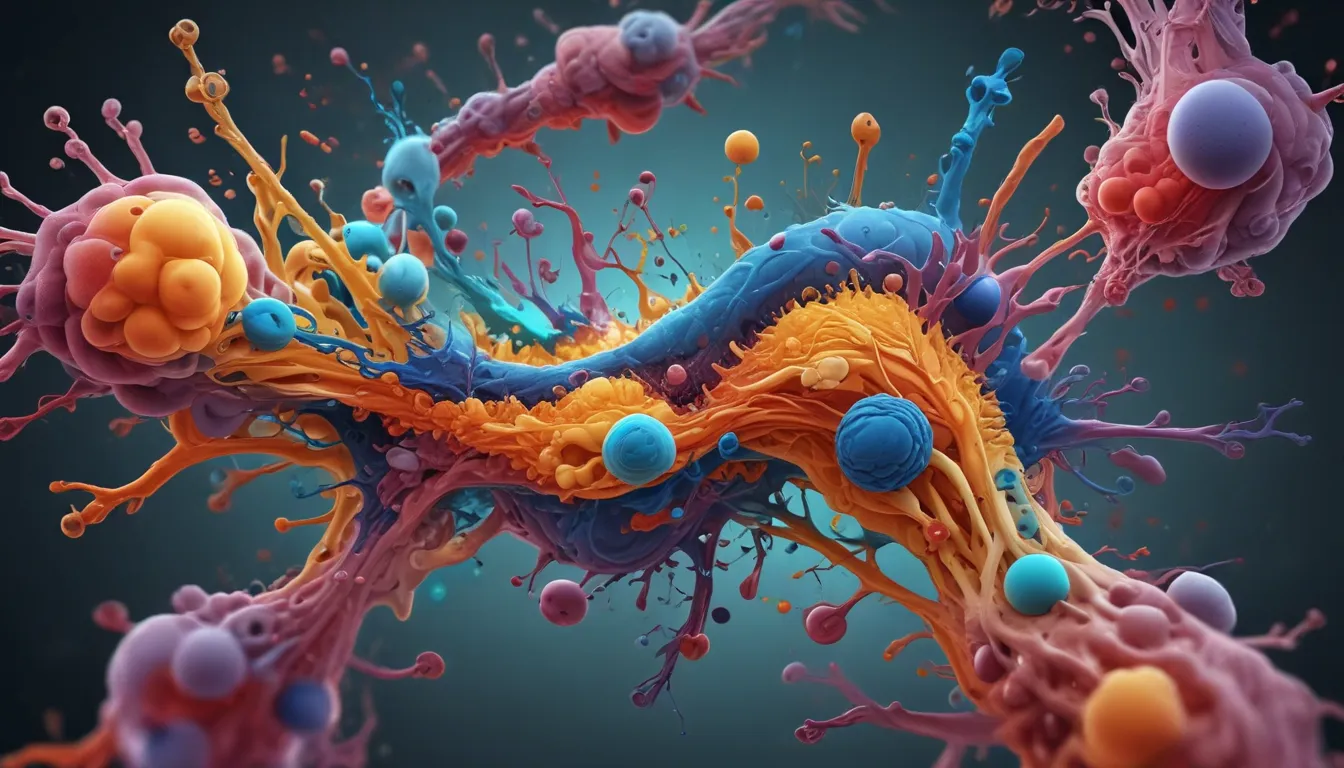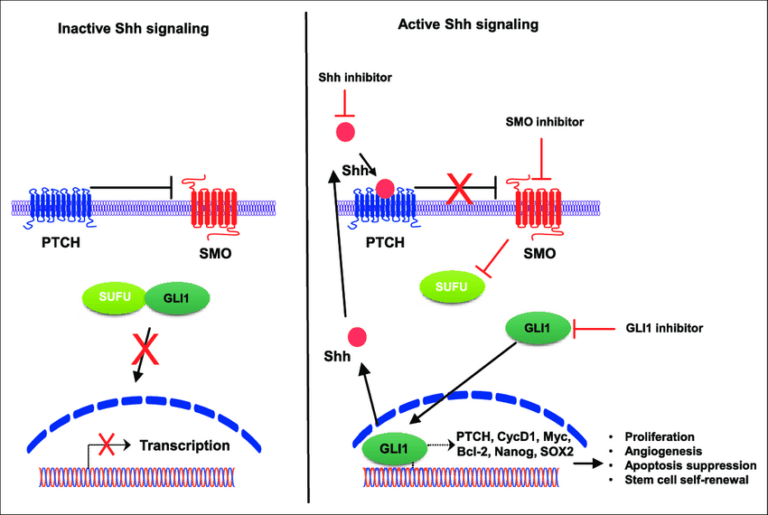A Note About Images: The images used in our articles are for illustration purposes only and may not exactly match the content. They are meant to engage readers, but the text should be relied upon for accurate information.
Welcome to the intriguing world of oxidative phosphorylation, a vital metabolic process that fuels the energy needs of our cells. From the powerhouse of the cell to the significance of oxygen in this intricate dance of biochemistry, there is so much to uncover. In this article, we will delve into 19 captivating facts about oxidative phosphorylation to shed light on its complexities and importance in powering our bodies.
The Powerhouse of the Cell
Oxidative phosphorylation takes place within the mitochondria, often referred to as the powerhouse of the cell. This process is responsible for generating the majority of the cell’s energy in the form of adenosine triphosphate (ATP).
Electron Transport Chain: The Powerhouse Machinery
The electron transport chain, a critical component of oxidative phosphorylation, comprises a series of protein complexes embedded in the inner mitochondrial membrane. These complexes work together to sequentially transport electrons, creating a proton gradient essential for ATP synthesis.
Coenzyme Q10: The Electron Carrier Extraordinaire
Coenzyme Q10, also known as ubiquinone, plays a crucial role in oxidative phosphorylation. It serves as an electron carrier, shuttling electrons between different protein complexes in the electron transport chain.
ATP Synthase: The Final Touch
ATP synthase is the enzyme responsible for the final step of oxidative phosphorylation. It harnesses the energy from the proton gradient to convert adenosine diphosphate (ADP) and inorganic phosphate (Pi) into ATP, the cellular energy currency.
Oxygen: The Ultimate Electron Acceptor
During oxidative phosphorylation, oxygen acts as the final electron acceptor in the electron transport chain, combining with electrons and protons to form water as a byproduct of the process.
NADH and FADH2: The Electron Carriers
Nicotinamide adenine dinucleotide (NADH) and flavin adenine dinucleotide (FADH2) serve as important electron carriers in oxidative phosphorylation. They donate electrons to the electron transport chain, fueling ATP synthesis.
Chemiosmosis: The Proton Power Dance
Chemiosmosis is the process through which ATP synthase utilizes the proton gradient generated during oxidative phosphorylation to produce ATP. This highlights the significance of electrochemical gradients in energy production.
Mutations and Mitochondrial Diseases
Genetic mutations in oxidative phosphorylation genes can lead to mitochondrial diseases, impacting tissues and organs with high energy demands. These disorders often affect functions such as those of the brain and muscles.
Regulation and Efficiency
Oxidative phosphorylation is tightly regulated to match the cell’s energy needs. Factors such as substrate availability, oxygen levels, and the cellular metabolic state influence the rate of ATP production through this process. Compared to anaerobic processes, this mechanism is highly efficient in generating ATP.
Cellular Signaling and Oxidative Stress
Besides ATP production, oxidative phosphorylation is involved in cellular signaling. Reactive oxygen species (ROS) generated during this process can serve as signaling molecules, influencing various cellular processes. However, oxidative stress, caused by an imbalance between ROS and antioxidants, can disrupt the process and impair ATP production.
The Connectivity to Aerobic Respiration
Oxidative phosphorylation is the final step of aerobic respiration, following glycolysis and the citric acid cycle. It completes the breakdown of glucose molecules and, in the presence of oxygen, generates ATP to fuel cellular activities.
The Universality of Oxidative Phosphorylation
While mitochondria are commonly associated with oxidative phosphorylation in eukaryotes, prokaryotes also possess similar mechanisms to generate ATP through this process. The absence of membrane-bound organelles like mitochondria does not hinder their ability to produce energy via oxidative phosphorylation.
Therapeutic Interventions and Future Frontiers
Given its crucial role in cellular functioning, oxidative phosphorylation is a prime target for therapeutic interventions. Some drugs selectively disrupt this process in cancer cells, offering promising avenues for cancer treatment. Ongoing research continues to unravel the complexities of oxidative phosphorylation, enhancing our understanding of cellular energy production.
Key Takeaways: Unveiling the Intrigues of Oxidative Phosphorylation
- Oxidative phosphorylation is a powerhouse inside our cells, generating energy in the form of ATP through an intricate process involving electron transport and enzyme reactions.
- Mutations in oxidative phosphorylation genes can lead to mitochondrial diseases, impacting tissues with high energy demands.
- This process is essential for cellular energy production and offers potential targets for cancer treatments.
In conclusion, oxidative phosphorylation is a captivating process that showcases the remarkable efficiency and adaptability of living organisms in generating the energy they need to sustain life. Understanding this vital energy-generating mechanism not only expands our knowledge of cellular biology but also paves the way for innovative therapeutic strategies for energy metabolism-related diseases. Let’s continue exploring the wonders of oxidative phosphorylation and celebrating the marvels of cellular bioenergetics together.
FAQs: Your Burning Questions Answered
Q: What is oxidative phosphorylation?
A: Oxidative phosphorylation is the process by which cells generate ATP, the energy currency required for various cellular functions, through electron transport in the mitochondria.
Q: How does oxidative phosphorylation work?
A: Oxidative phosphorylation involves multiple steps where electrons flow through the electron transport chain, creating a proton gradient that drives ATP synthesis by ATP synthase.
Q: Where does oxidative phosphorylation occur?
A: Oxidative phosphorylation takes place within the inner mitochondrial membrane of eukaryotic cells, providing the necessary environment for ATP synthesis.
Q: What is the significance of oxidative phosphorylation?
A: Oxidative phosphorylation is vital for ATP production, enabling cells to efficiently convert food sources into usable energy for essential functions and homeostasis.
Q: Can oxidative phosphorylation be compromised?
A: Dysfunction in any of the components involved in oxidative phosphorylation can lead to energy metabolism disorders, impacting various bodily systems and functions.
We hope this comprehensive guide has enriched your understanding of oxidative phosphorylation and its pivotal role in cellular energetics. Stay curious, keep exploring, and unlock the mysteries of the biochemical processes that drive life’s vibrant dance!






